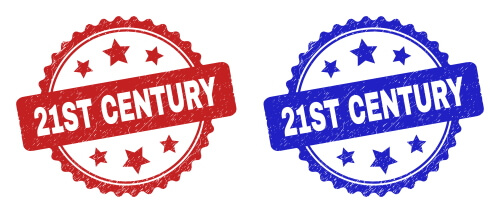The law Check 21 or also known as the Check Clearing for the 21st Century Act was signed on October 28, 2003, and put into effect the same date the following year. This means that all provisions have been in effect from that day forward. The implementation will foster innovations in the existing payment system as well as enhance the efficiency through the reduction of some legal impediments associated with check truncation.

To effectively facilitate this process it became necessary to create the new negotiable instrument, substitute check. This allows banks to truncate the original checks, electronically process information, and provide the substitute checks to the financial institution in order to continuously receive the paper checks. The substitute check in turn becomes the legal equivalent for the original check including all its information. To gain a better understanding of Check 21, consider the following questions.
What is the basic purpose of this Act?
It is a type of federal law that has been enacted in order to empower banking institutions in handling more checks electronically. The basic purpose therefore is to make the processing of checks faster and more efficient. This Act takes into account that banks today normally have to physically move the original paper checks from the originating bank responsible paying for them.
This results in a transportation method that is not only considered inefficient, but also relatively costly. This Act attempts to successfully address this banking problem.
How can the Act make the processing of checks more efficient?
With Check 21, instead of the physical movement of the paper checks among issuing and receiving banks, electronic processing of checks becomes legalized. Banks therefore can legally capture the front and back image of the check including other pertinent payment information. These can then be electronically transmitted between banking institutions, which is considerably faster than physical transmittal of the paper checks.
When a customer or the receiving bank requires the paper check, the electronic image including its payment information can be used to generate a substitute check. This means banks benefit through the associated elimination of cost for the physical handling and transportation of the original paper check, which can be considerably expensive.
Can electronic processing be considered secure?
It is important to note that electronic check processing is not a new method in the financial industry. Since it has already been a part of the transaction methods of banking institutions, it can be considered as relatively safe and reliable for processing check payments. The technology used which has been developed has already been previously tested to ensure that check information is handled securely.
Can customers continue receiving their checks with their account statement?
The Act will not affect how bank customers receive their issued paper checks in their account statements. This is because the entries in the account statement will continue to be covered by the agreement between the issuing bank and the account holder. This Act however gives issuing banks the option of either providing the original check issued or a substitute check.
What changes should be expected by checking account holders?
For the countless number of checking account holders who do not receive their cancelled checks with their account statement, there is very little difference for them. However, most will only notice the changes when they start receiving substitute checks instead of the original checks. This means that checking account holders may begin receiving a combination of original and substitute checks together with their account statement.
Will there be a noticeable increase in the clearance time of checks?
It is expected that with the implementation of the Check 21, clearance time between banks will increase considerably. This is taking into account that the improvements in the check system has already improved in processing time. Today, when a check has been deposited, the delivery would normally allow the paying bank to receive it overnight. The amount will be debited to the corresponding checking account by the next banking day.
The Act is only part of the continuous process of improving and increasing the processing time for checking account transactions. Because of the speed of processing, it is important for checking account holders to ensure that there is ample money to cover any checks that they issue to avoid the potentials for bouncing checks.
Will the Act have an effect on how check deposits are made ready for withdrawal?
Checking account holders must be aware that there is already an existing federal law that explicitly provides for the maximum timeframe that funds must become available to the account holder. The implementation of this Act did not modify or affect the specified holding time for checking accounts.
However, if the Act sufficiently increases the processing time, the Federal Reserve Board will be obligated to match this increase by reducing holding time. Account holders must be aware that the holding time will have no effect on the interest for the deposited funds.
Is there a difference between this Act and other programs for electronic payments?
Essentially, when you write a check, it will be covered by the appropriate laws and regulations. However, some merchants have the option to use the information on your check to initiate an electronic transfer of funds. It is important that the checking account holder be given ample notice that the check will be processed in such a way. The difference between Check 21 and electronic fund transfers is that there are separate sets of laws that cover them including consumer rights.
There are widespread concerns that the implementation of this Act may contribute to further bouncing of checks and resulting in higher bank fees being shouldered by checking account holders. This is because of the many believe that the legislation is considerably complicated and many of the new rights are dependent on numerous factors including how merchants decide to process check payments. These questions will help to minimize and clear up any apprehensions with the Check 21 law by many checking account holders.